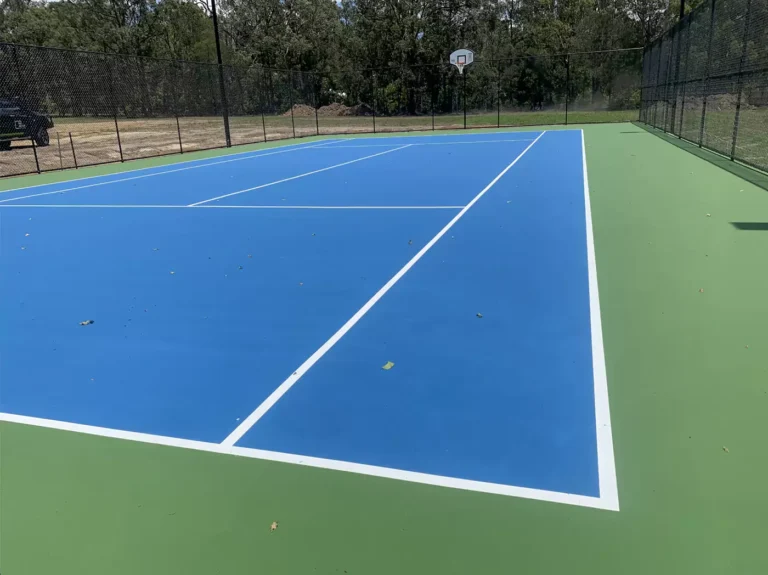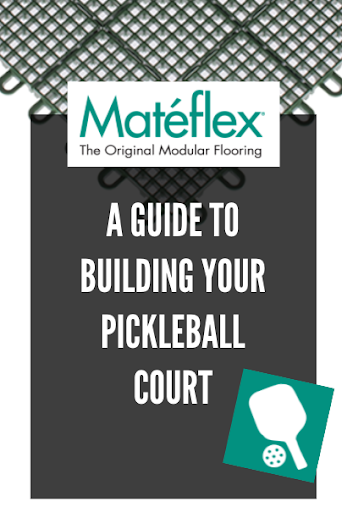Sustainable Practices in Pickleball Court Building You Should Know
As the appeal of pickleball continues to rise, so too does the requirement for lasting practices in court building. The effect of these techniques extends far beyond the court itself.
Selecting Eco-Friendly Products
Picking green materials is a vital action in the building and construction of lasting pickleball courts. The option of lasting products not just decreases ecological impact however additionally boosts the longevity and performance of the court. Secret products consist of recycled rubber for the surface, which supplies outstanding durability and shock absorption while diverting waste from garbage dumps.
Additionally, utilizing locally sourced products decreases transportation discharges and sustains local economic situations. Pickleball court construction. For instance, utilizing native woods for fence and seating can give a lasting aesthetic while ensuring strength against the components.
Including absorptive materials for court foundations can further contribute to sustainability by enabling all-natural water drain and minimizing runoff. These options not just safeguard local communities however additionally promote healthier play environments.
Reliable Drainage Solutions
While the selection of environmentally friendly products is necessary, implementing effective water drainage solutions is just as important for preserving lasting pickleball courts. Correct water drainage not only safeguards the court surface area from water damage however also lessens erosion and overflow, promoting environmental integrity.
Reliable drain systems can consist of absorptive paving, which allows water to penetrate the ground as opposed to merging on the surface area. This lowers the likelihood of standing water, which can result in mold and various other maintenance concerns. In addition, integrating tactically put drain networks and swales can guide excess water far from the court location, ensuring a dry playing surface and stopping soil erosion.
Using indigenous plant life in the landscaping around the courts can additionally improve water drainage by soaking up excess water and minimizing runoff. These plants call for much less watering and promote biodiversity, straightening with lasting practices.
In addition, it is critical to regularly maintain the drainage system to ensure its long-term efficiency. This consists of cleaning particles and surveillance for obstructions. By focusing on effective water drainage services, pickleball court manufacturers can substantially add to the sustainability and longevity of the facility, inevitably benefiting both gamers and the setting.
Energy-Efficient Lights Options
As the demand for pickleball remains to expand, integrating energy-efficient illumination alternatives into court style has actually ended up being progressively vital for sustainability. Conventional illumination systems often consume excessive power, adding to higher operational costs and ecological effect. Therefore, taking on modern-day, energy-efficient technologies is essential for both new building and constructions and remodellings.
LED (Light Emitting Diode) lighting stands apart as a leading option as a result of its long life and energy savings (Pickleball court construction). Contrasted to standard illumination, LEDs make use of approximately 75% less power and can last up to 25 times longer, considerably minimizing maintenance costs. The directional nature like it of LED illumination reduces light contamination, guaranteeing that illumination is focused on the court instead than bordering areas.

Sustainable Surface Area Alternatives
Discovering lasting surface area options for pickleball courts has gained traction amongst building contractors and gamers alike. The focus on environment-friendly materials not only aligns with the expanding environmental awareness yet additionally improves the performance and longevity of the courts.
One preferred option is the use of recycled rubber, which can be sourced from made use of tires. This material gives exceptional shock absorption, decreasing the risk of injuries for gamers while promoting sustainability. In addition, modular ceramic tiles made from recycled plastics offer an additional practical alternative. These ceramic tiles are very easy to change and mount, and their flexibility permits for various court setups.
Natural lawn courts are also becoming a lasting choice, advertising biodiversity and lowering the heat island result. However, they need normal maintenance and water, which may not line up with all Source sustainability objectives.

Water Preservation Methods

Another reliable strategy entails the setup of rain harvesting systems. These systems keep and collect rain for use in preserving court surfaces and landscape design. This strategy not just preserves drinkable water however additionally decreases reliance on local sources.
Furthermore, employing drought-resistant landscaping around the courts is essential. Indigenous plants call for less water and are better adjusted to regional climate problems, therefore decreasing overall water intake. Furthermore, making use of reliable irrigation systems, such as drip irrigation, makes sure that water is supplied straight to plant roots, reducing dissipation and waste.
Conclusion
Integrating sustainable techniques in pickleball court building considerably adds to ecological conservation and source performance. By focusing on these techniques, the building and construction of pickleball courts can line up with wider ecological goals while promoting longevity and capability within areas.
As the appeal of pickleball continues to rise, so also does the demand for sustainable practices in court building and construction.Picking environment-friendly materials is an essential action in the building and construction of sustainable pickleball courts. By focusing on energy-efficient lights choices, pickleball court manufacturers can contribute to an extra sustainable future while fulfilling the demands of stakeholders and players alike.Including sustainable surface area alternatives not just enhances the efficiency of pickleball courts but also leads the means for implementing effective water preservation techniques.Integrating lasting methods in pickleball court building and construction substantially adds to ecological preservation and resource performance.